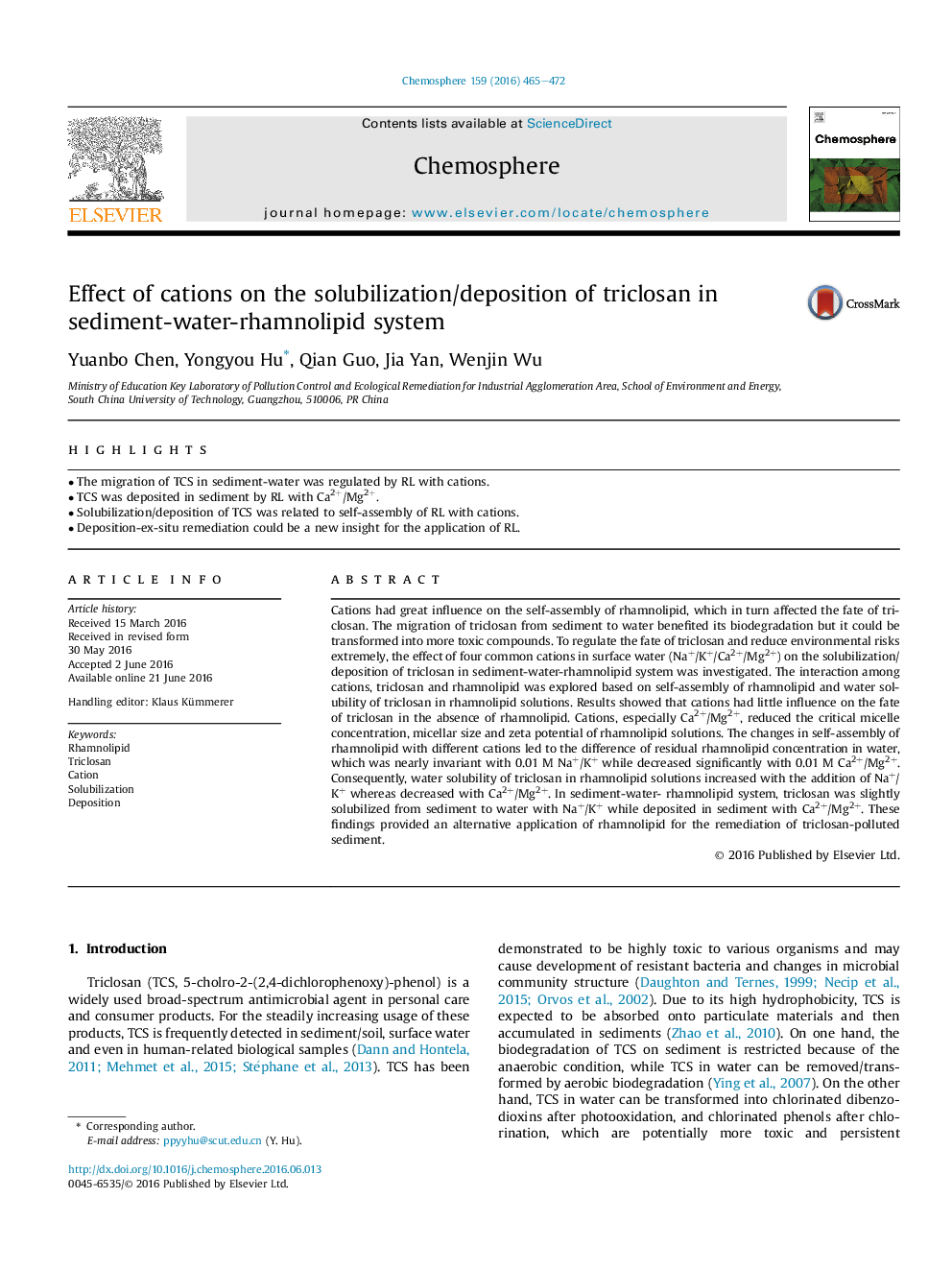| کد مقاله | کد نشریه | سال انتشار | مقاله انگلیسی | نسخه تمام متن |
|---|---|---|---|---|
| 4407475 | 1618812 | 2016 | 8 صفحه PDF | دانلود رایگان |
• The migration of TCS in sediment-water was regulated by RL with cations.
• TCS was deposited in sediment by RL with Ca2+/Mg2+.
• Solubilization/deposition of TCS was related to self-assembly of RL with cations.
• Deposition-ex-situ remediation could be a new insight for the application of RL.
Cations had great influence on the self-assembly of rhamnolipid, which in turn affected the fate of triclosan. The migration of triclosan from sediment to water benefited its biodegradation but it could be transformed into more toxic compounds. To regulate the fate of triclosan and reduce environmental risks extremely, the effect of four common cations in surface water (Na+/K+/Ca2+/Mg2+) on the solubilization/deposition of triclosan in sediment-water-rhamnolipid system was investigated. The interaction among cations, triclosan and rhamnolipid was explored based on self-assembly of rhamnolipid and water solubility of triclosan in rhamnolipid solutions. Results showed that cations had little influence on the fate of triclosan in the absence of rhamnolipid. Cations, especially Ca2+/Mg2+, reduced the critical micelle concentration, micellar size and zeta potential of rhamnolipid solutions. The changes in self-assembly of rhamnolipid with different cations led to the difference of residual rhamnolipid concentration in water, which was nearly invariant with 0.01 M Na+/K+ while decreased significantly with 0.01 M Ca2+/Mg2+. Consequently, water solubility of triclosan in rhamnolipid solutions increased with the addition of Na+/K+ whereas decreased with Ca2+/Mg2+. In sediment-water- rhamnolipid system, triclosan was slightly solubilized from sediment to water with Na+/K+ while deposited in sediment with Ca2+/Mg2+. These findings provided an alternative application of rhamnolipid for the remediation of triclosan-polluted sediment.
Journal: Chemosphere - Volume 159, September 2016, Pages 465–472
